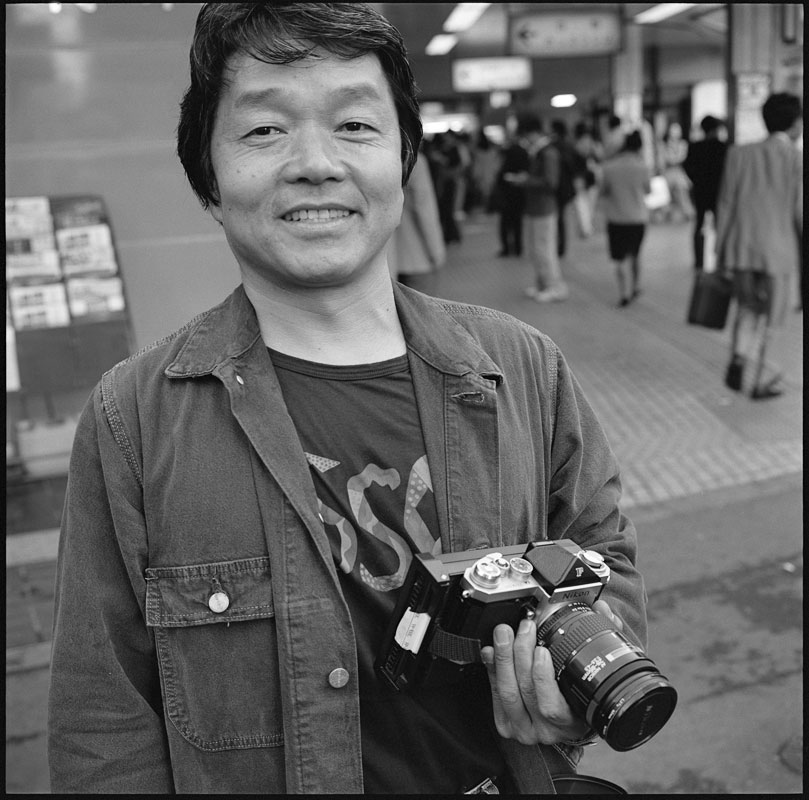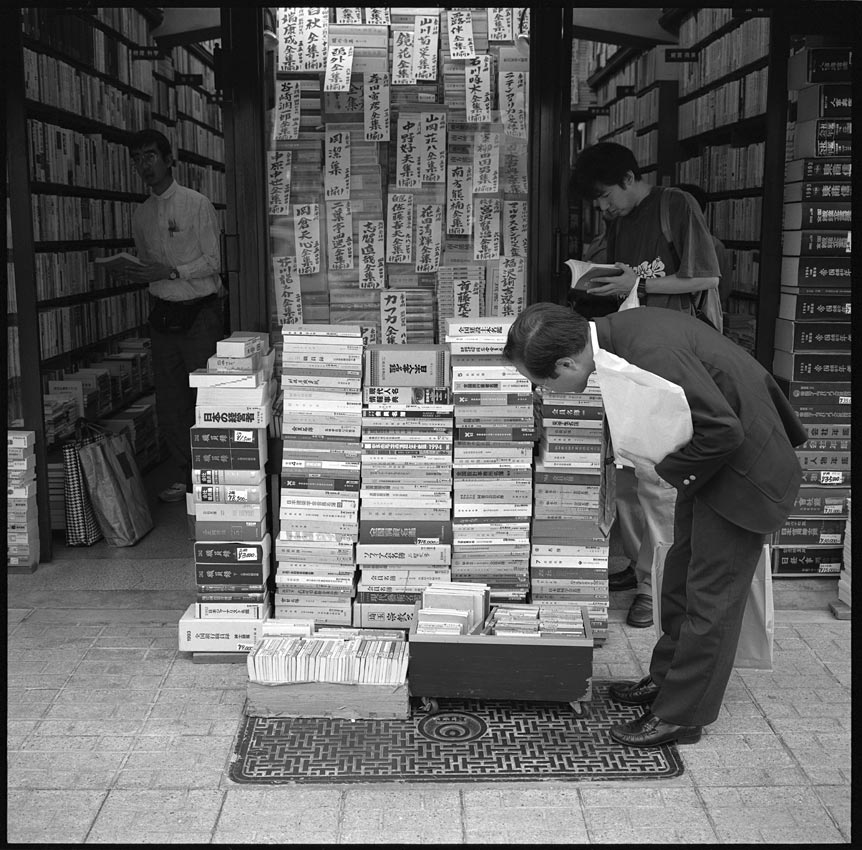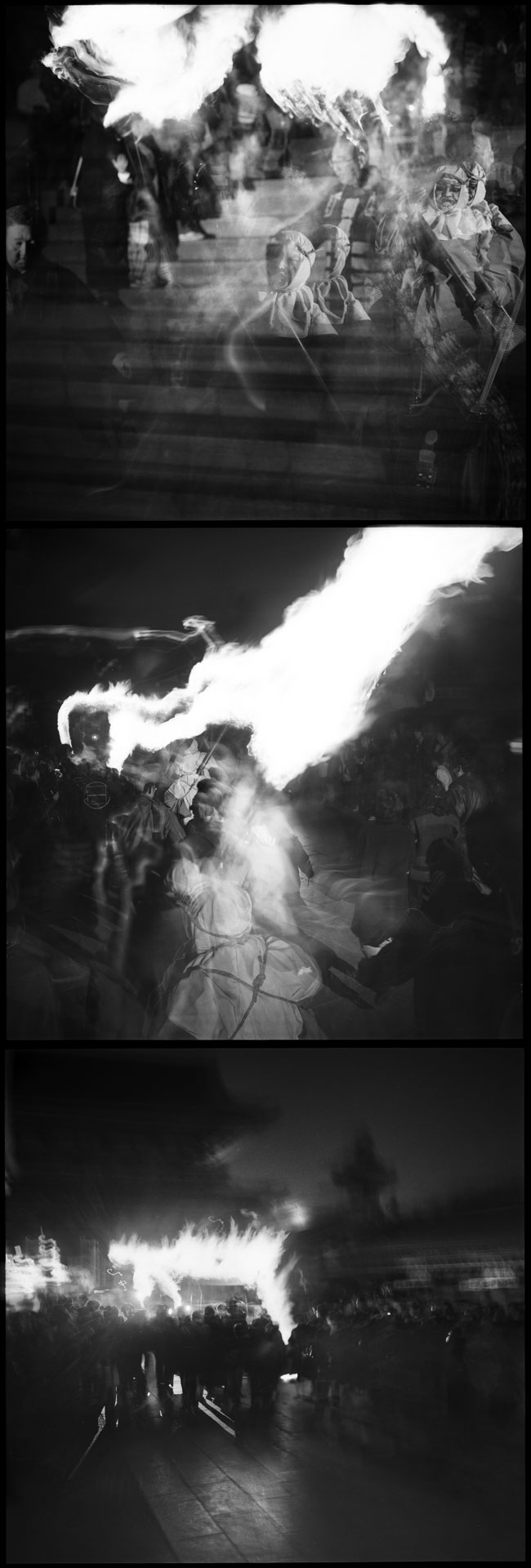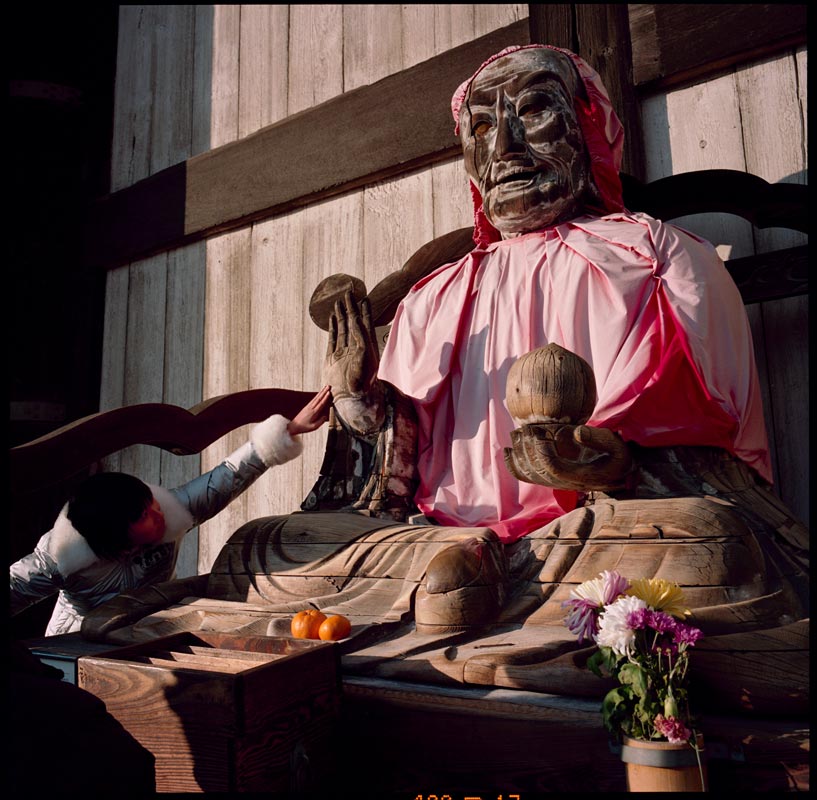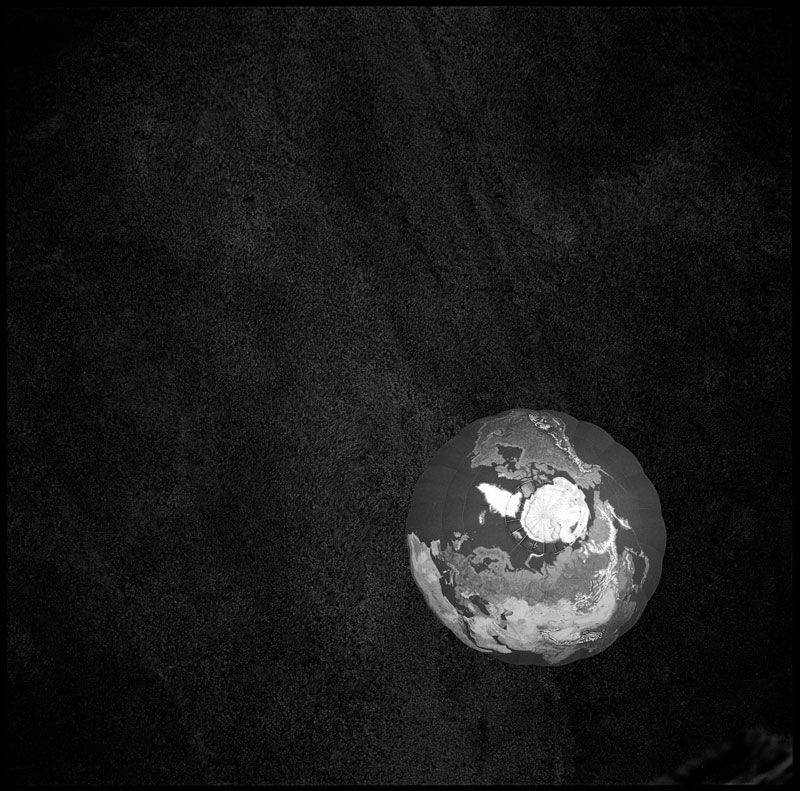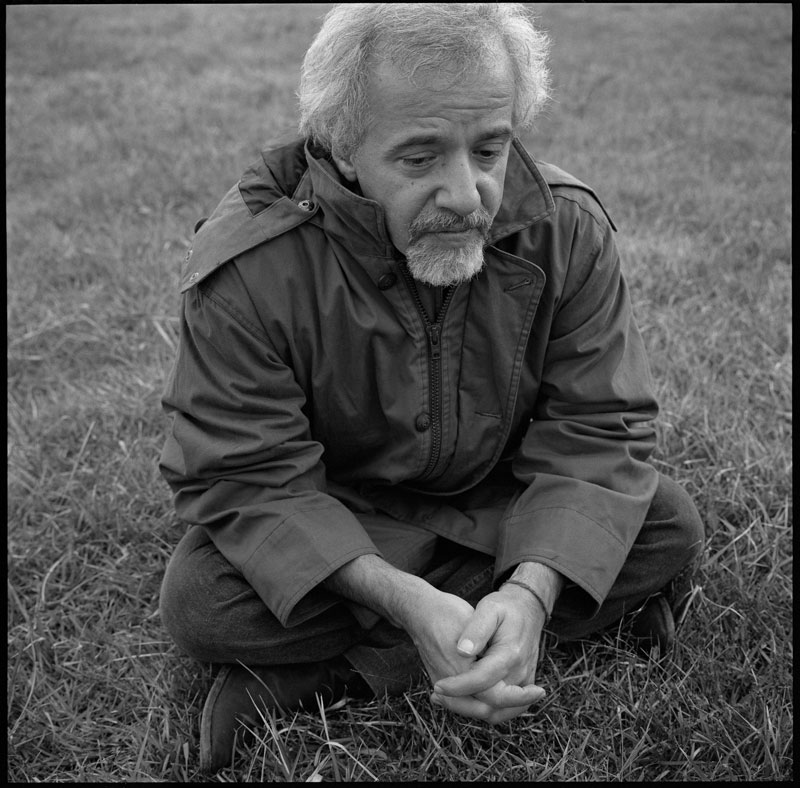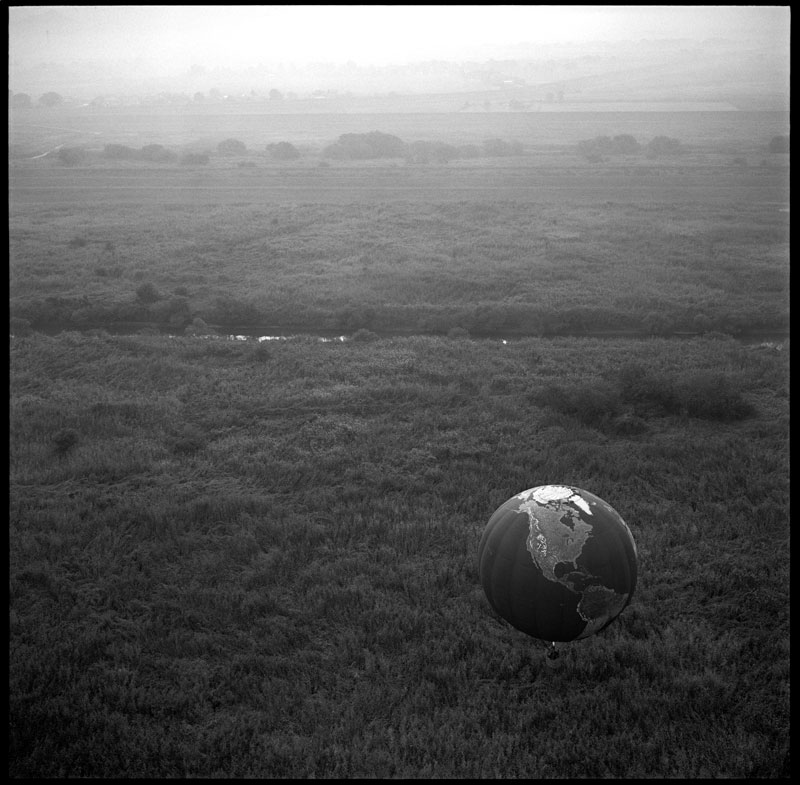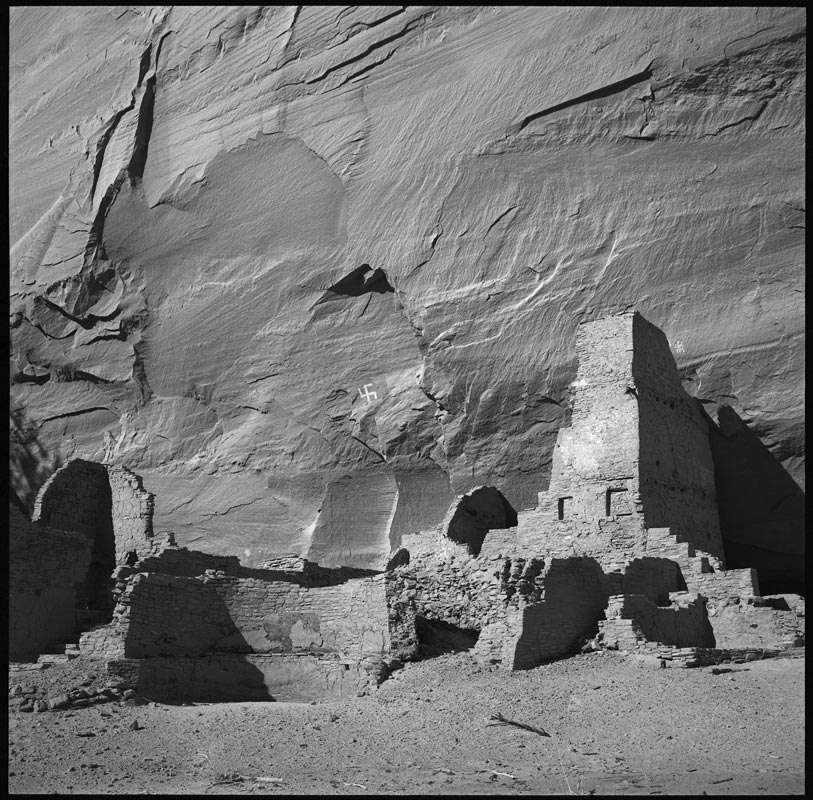 Before the Dineh, or Navajo, arrived in Canyon de Chelly, the area was home to the Anasazi, a name given to them by the Dineh meaning “ancestors of the enemy.” The Anasazi settled the area sometime in the first century.
Before the Dineh, or Navajo, arrived in Canyon de Chelly, the area was home to the Anasazi, a name given to them by the Dineh meaning “ancestors of the enemy.” The Anasazi settled the area sometime in the first century.
Antelope House Ruin is from the Great Pueblo Period or Pueblo III period, beginning around the 1100s when large settlements were being built. The two-story tower suggests these places were fortifications—some built high up on the canyon walls. The round wall at the left of the tower is the remains of a kiva that played a ceremonial or religious role in the community. Even with these large constructions, it seems that most of the population still lived in small dwellings outside these structures.
It is unclear whether the swastika on the canyon wall is from the Anasazi or Dineh. The Hopi, a descendant of the Anasazi, use this symbol as a representation of their migration story. For the Dineh, it is used in healing rituals.
By the beginning of the 1300s, the Anasazi had gone from Canyon de Chelly. Studies of tree rings shows there was a sever drought from 1276–1299. There is some evidence that over population and stress placed on the environment may have contributed to their decline as well. The modern Pueblo tribes of the Hopi, Zuni, Acoma, and Leguna are believed to be the descendants of the Anasazi.
 The canyon walls are sliced from De Chelly sandstone. Formed during the late Permian Period, about 200 million years ago, the stone still reflects the ancient sand dunes that created them.
The canyon walls are sliced from De Chelly sandstone. Formed during the late Permian Period, about 200 million years ago, the stone still reflects the ancient sand dunes that created them.


